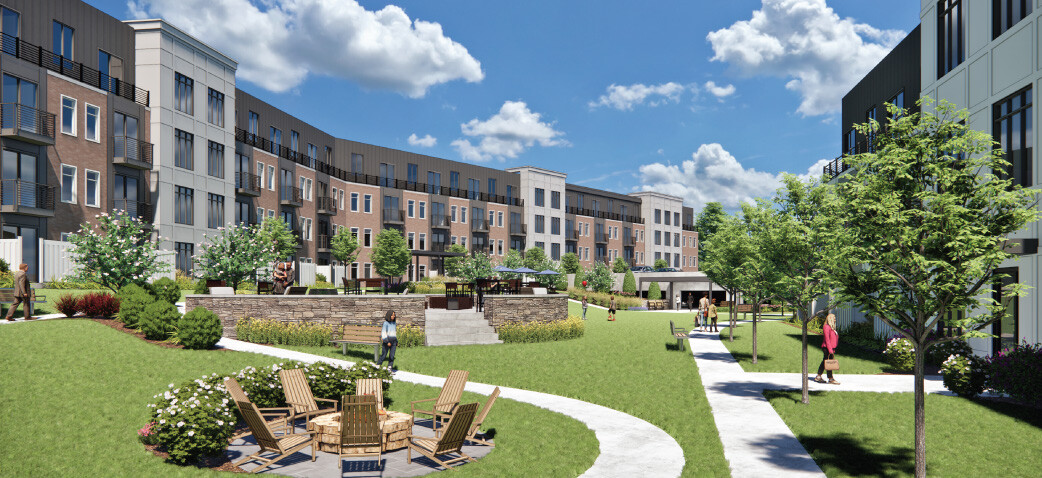The MBTA Communities law was enacted by the former Baker administration, requiring that all communities served by the Massachusetts Bay Transit Authority (MBTA) must zone for multifamily housing. In the last couple of years since it was enacted, towns and municipalities around Massachusetts are grappling with how to tackle the need for multifamily housing in their community.
What Is the MBTA Communities Law?
At its core, the MBTA Communities law mandates that all cities and towns served by the MBTA transit system must zone for multifamily housing "by right"—meaning that developers can build without needing special permits or variances, provided they comply with the local zoning.
The rationale is simple: Massachusetts is significantly behind in housing production, particularly for multifamily units. This law aims to unlock more housing opportunities near transit and reduce the over-reliance on single-family zoning.
A Shifting Landscape: Every Town is Different
Every MBTA community is responding to this mandate differently. For example, a city like Newton, with several transit stops, may be expected to accommodate more units than a smaller neighboring community. Those smaller towns, however, are still required to carve out zoning districts that allow at least 15 units per acre by right—a significant change for communities that have historically resisted multifamily housing.
The law also streamlines local approvals. Previously, zoning changes often required a two-thirds majority vote at Town Meeting or by local boards. Now, just a simple majority can pave the way, which could dramatically shift the development landscape.
Opportunities for Developers
At Maugel DeStefano Architects, we’ve seen an influx of developers re-evaluating land once considered undevelopable. The MBTA Communities law opens up new opportunities, and we’re helping our clients conduct yield studies to determine what can realistically be built and what makes sense from both a design and financial standpoint.
However, it’s not as easy as just buying land and putting up buildings. Before any serious work begins, engaging the town is critical.
The Importance of Partnership with Towns
Developers must collaborate with towns early in the process. It’s not just about meeting zoning requirements—it’s about working with local officials, boards, and residents to ensure the project fits the town’s vision and practical constraints.
We’ve seen cases where towns attempt to write new zoning bylaws without developer input—only to realize the regulations make projects financially or logistically unfeasible. The result? Nothing gets built.
The most successful projects come from mutual understanding—where developers help towns understand the economics and logistics of multifamily development, and towns help shape projects that align with their community character.
From Concept to Reality: Our Process
When a developer approaches us with a site, we begin with a comprehensive discovery process:
• What is the unit count goal?
• What is the desired unit mix (studios, one-beds, two-beds)?
• What’s the expected square footage per unit?
• Are there affordable housing or inclusionary zoning requirements?
• Are there any state or local incentives to consider?
We also assess infrastructure, traffic impact, school capacity, and other community concerns early in the process. Collaborating with civil engineers, traffic engineers, and land use attorneys is key to understanding the site's real-world constraints.
Community Engagement Is Everything
One of the most important—and often overlooked—steps in the process is community outreach. Hosting neighborhood meetings before formal planning board or zoning hearings helps defuse opposition. Listening with empathy, responding to concerns, and adjusting plans early often turns skeptics into supporters.
For example, in Worcester, we’ve had tremendous success. Though it’s a city, it provides a great example of how strong municipal support can transform neighborhoods. Projects near Polar Park have helped revitalize entire districts, thanks to open communication and collaborative planning.
In summary, the MBTA Communities law presents both a challenge and an opportunity—for developers to access new sites and for towns to plan more thoughtfully for the future. Success hinges on early collaboration: between developers, architects, attorneys, and municipalities. With a proactive, transparent approach and the right team in place, it's possible to deliver housing that meets community objectives while maintaining project viability. This is more than just a zoning change—it’s an opportunity to thoughtfully shape the development of our communities for future generations.
RELATED CONTENT
Read Multifamily News & Insights
The Four C's of Multifamily Design
Modern Multifamily Amenity Design: From Co-Working to Podcast Studios and Uber Zones
The New Multifamily Living, Working and Lifestyle Trends

